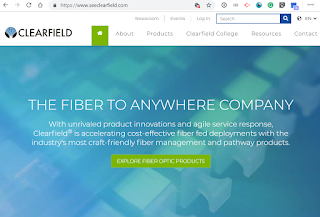ADVA introduced an expanded FSP 3000 open line system (OLS) for data center interconnect (DCI) applications.
The modular and disaggregated design of the new OLS works with all coherent and direct detect technologies, such as PAM4. High levels of software-driven automation enable the OLS to adapt to match line conditions and achieve maximum reach without manual intervention.
 “The open and disaggregated design of our new DCI OLS delivers more choice and flexibility than ever before. Customers can now select the ideal components for their exact requirements and achieve the lowest cost per Gigabit mile in every possible DCI scenario,” said Paul Morkel, senior director, network architecture, ADVA. “Also, by decoupling terminal functions from the line system, our solution offers total freedom to evolve and optimize each network layer separately. By taking advantage of different component lifecycles, customers will enjoy a much faster pace of innovation and growth. Yet what really makes our DCI OLS special is its ability to automatically adjust its performance to match the characteristics of the fiber link. Not only does this simplify network planning, but it also drastically reduces operating costs and improves overall network efficiency.”
“The open and disaggregated design of our new DCI OLS delivers more choice and flexibility than ever before. Customers can now select the ideal components for their exact requirements and achieve the lowest cost per Gigabit mile in every possible DCI scenario,” said Paul Morkel, senior director, network architecture, ADVA. “Also, by decoupling terminal functions from the line system, our solution offers total freedom to evolve and optimize each network layer separately. By taking advantage of different component lifecycles, customers will enjoy a much faster pace of innovation and growth. Yet what really makes our DCI OLS special is its ability to automatically adjust its performance to match the characteristics of the fiber link. Not only does this simplify network planning, but it also drastically reduces operating costs and improves overall network efficiency.”“The latest evolution of our FSP 3000 is without doubt the most comprehensive OLS solution for DCI applications on offer. There’s simply nothing else out there that delivers the same levels of flexibility and SDN control. Our team is dedicated to creating open systems for disaggregated network deployments and preventing vendor lock-in, and that’s exactly what this launch is all about. Our new DCI OLS will empower our customers to take their DCI strategy further than ever before,” said Stephan Rettenberger, SVP, marketing and investor relations, ADVA. “Now operators can select the line speeds and modulation formats that suit their specific business needs. You want the spectral efficiency of a coherent solution? Our DCI OLS can deliver. You prefer to use direct detect PAM4 technology? With our system, we’ve got you covered.”
http://adva.li/fsp-3000-dci-ols-slides
http://adva.li/fsp-3000-dci-ols-solution-brief






















































